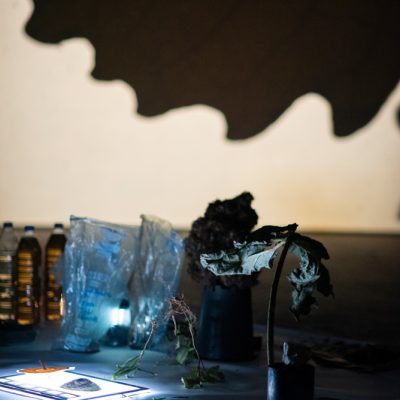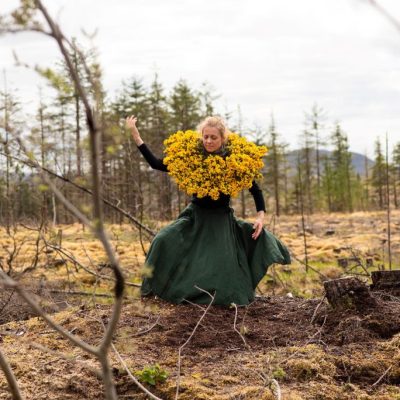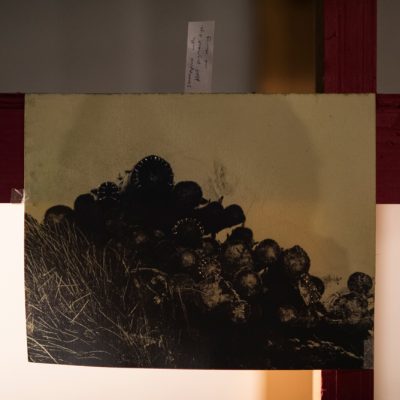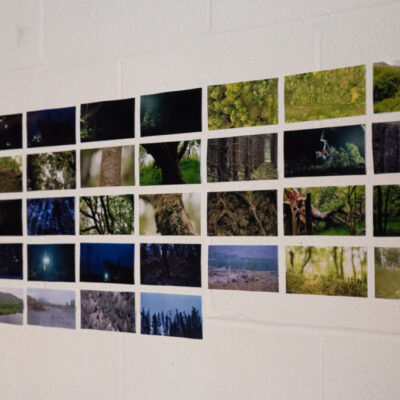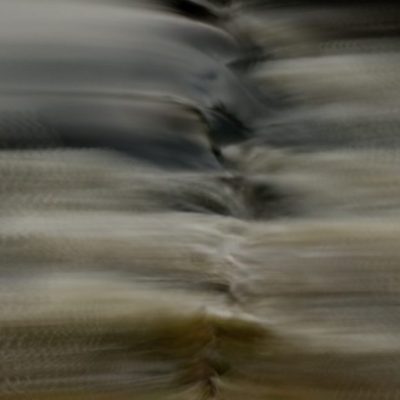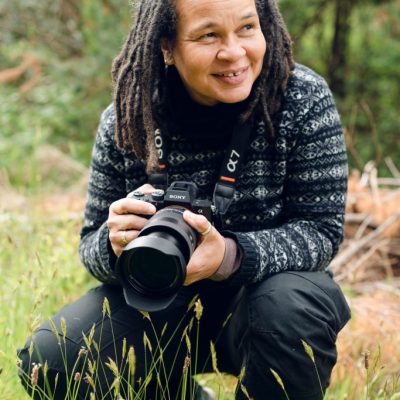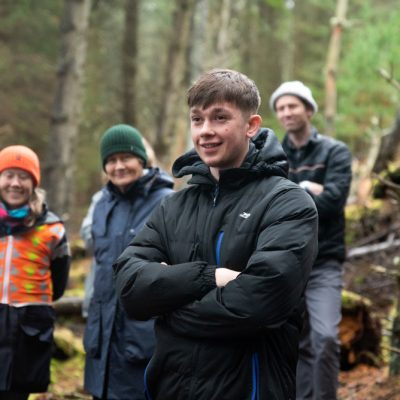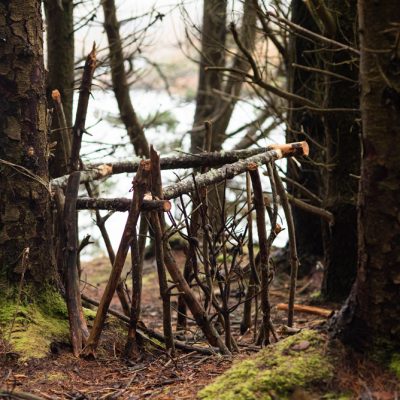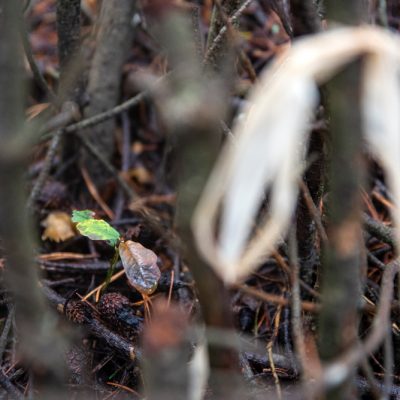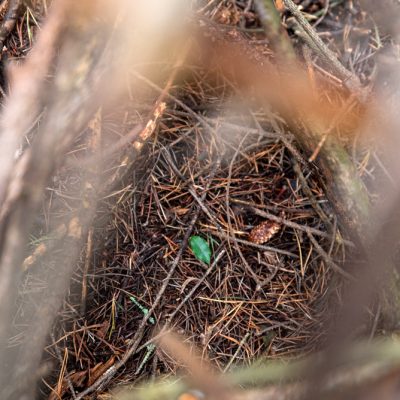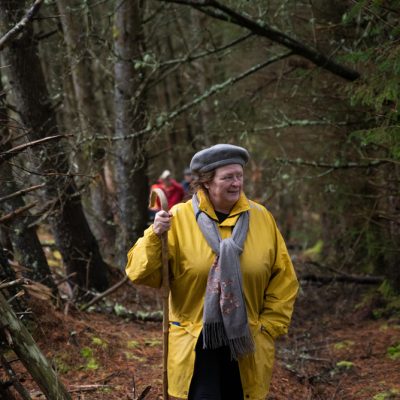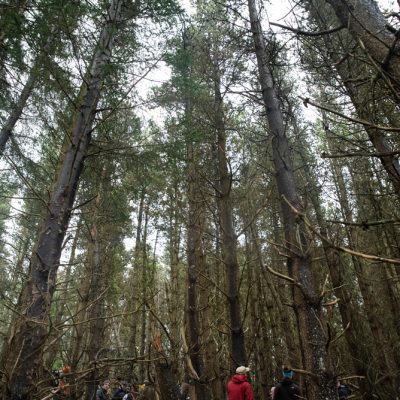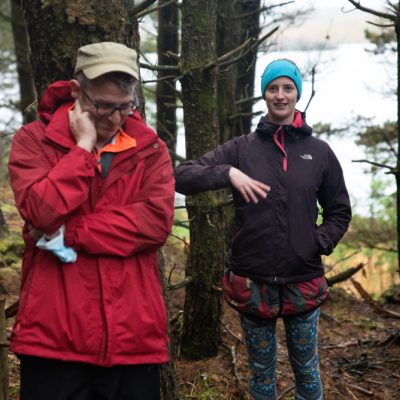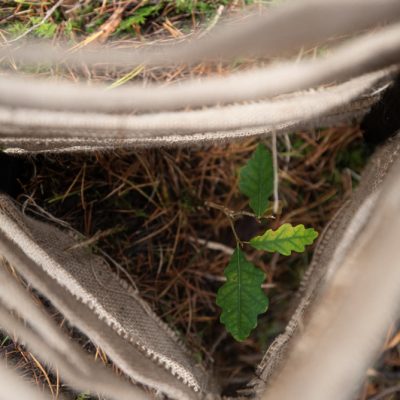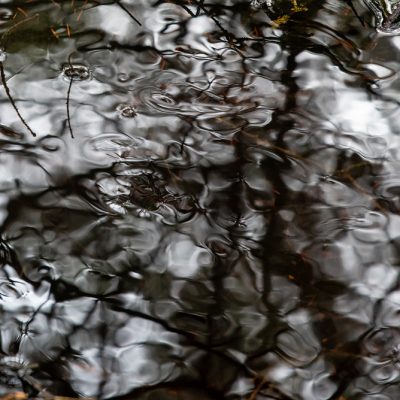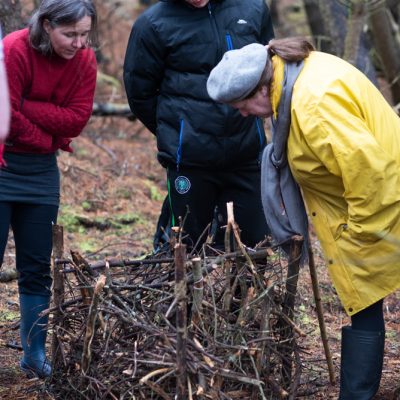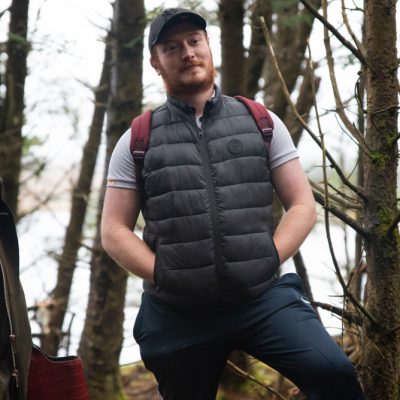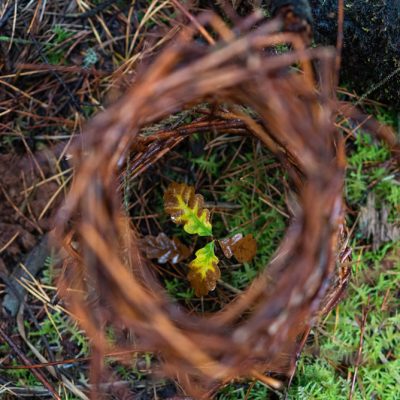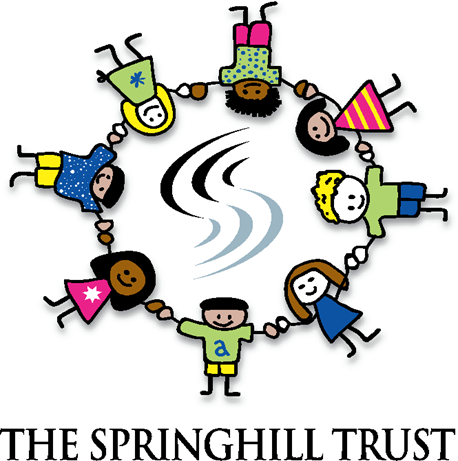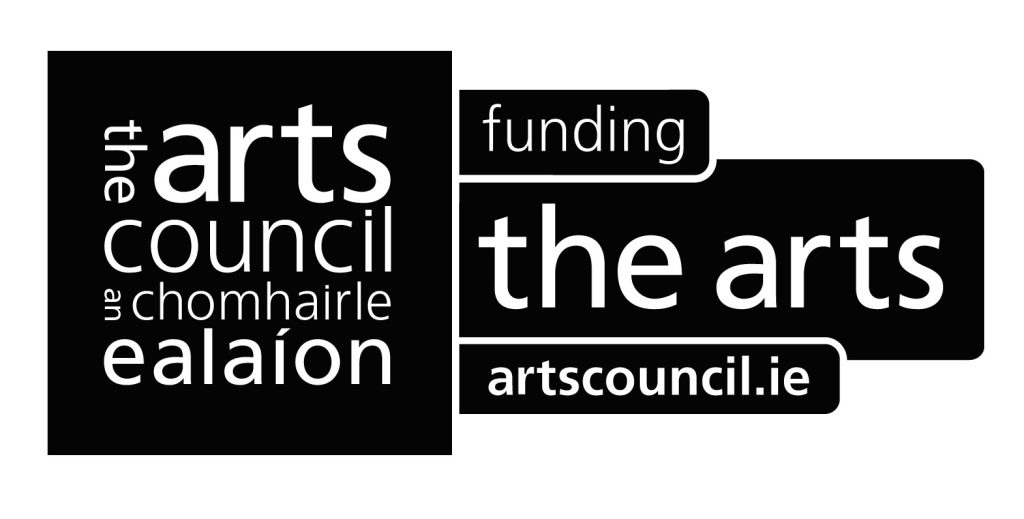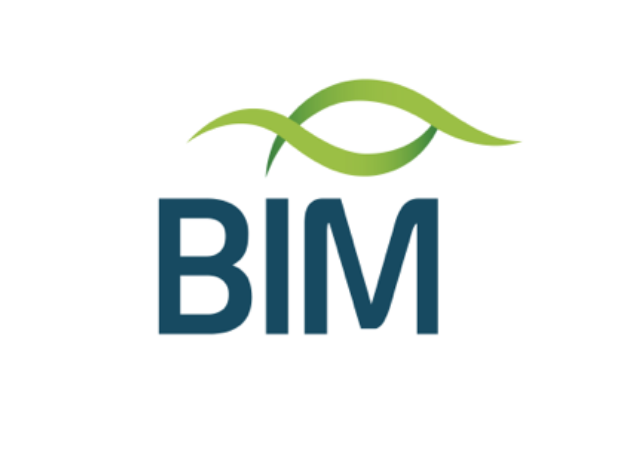Woodland & Ecology
The hatchery building is surrounded by 37 acres of Sitka Spruce forest. It has long been the vision of the landlord to restore this barren, monocultural forest to native woodland, with a preference for continuous cover. In 2018 an application was made for a felling license, in order to initiate this process. In the meantime, Interface has initiated several projects in which artistic interventions reflect on this exciting project and the ecological change. It is envisaged that the projects will evolve with the gradually changing evolution of the ecology and the healing of the land.
Springhill Trust - In 2022, the project gained the support of the Springhill Trust. This has enabled Interface to give immediate attention to supporting the regeneration of the lake edges. We have assigned a dedicated team to manage the replanting of native species and to support nature's own natural regeneration processes, protecting oak saplings from bruising by deer and sheep.
Woodland Symposium – A team of artists have been invited to reflect on the planned restoration of Sitka Spruce to native woodland. They are being led by ecologist Marie Louise Heffernan and archaeologist Michael Gibbons. The intention of the project is to initiate a slow-art response with longevity, which will evolve with the slowly changing ecology of the site. The group of artists will return year on year, with artists dipping in and out over the years.
ATU Connemara - Since 2021, Interface has been partnering biannually with ATU Connemara to deliver interventions by the students in the forest environment. The involves the students engaging with designer Peter Sheehan as well as with one of the international artists in residence at Interface.
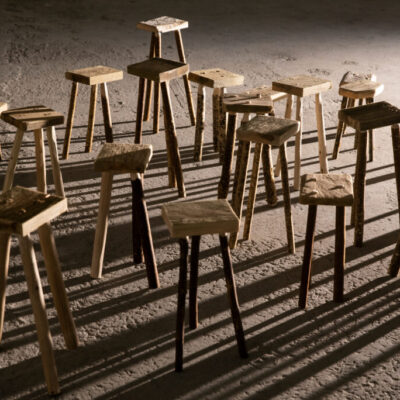
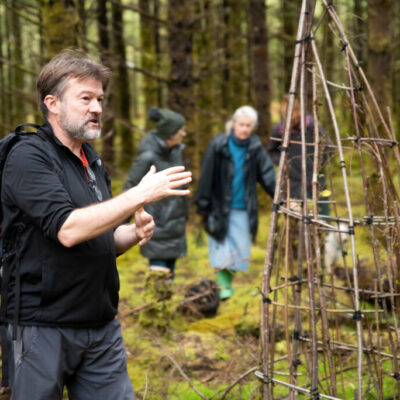
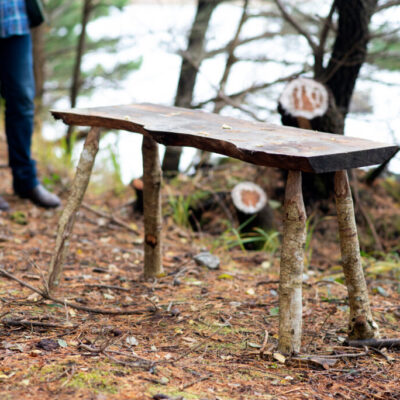
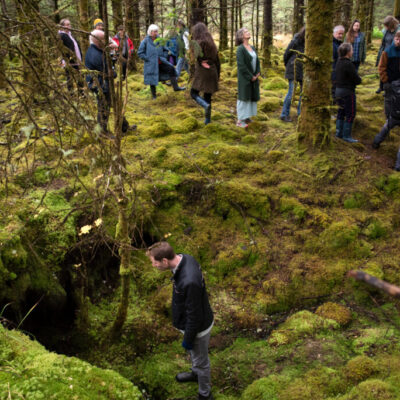
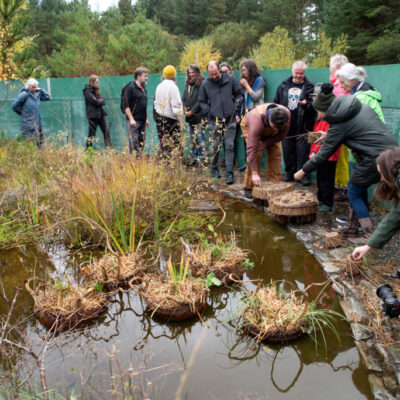
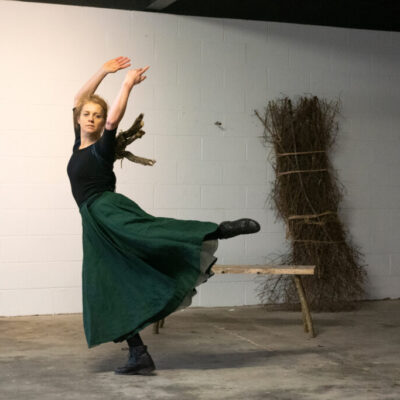
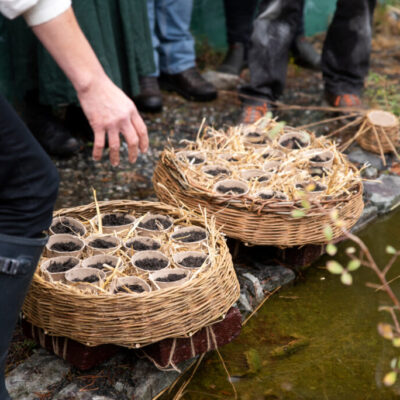
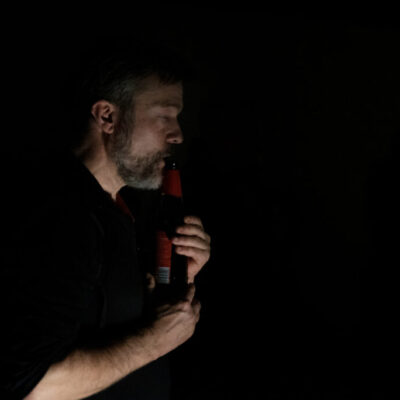

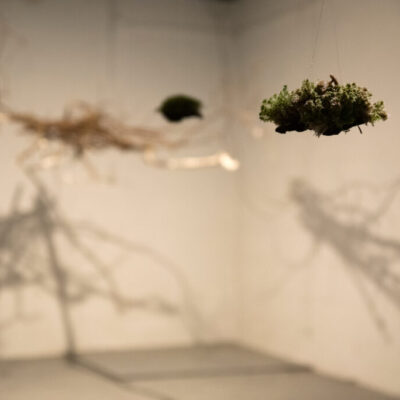
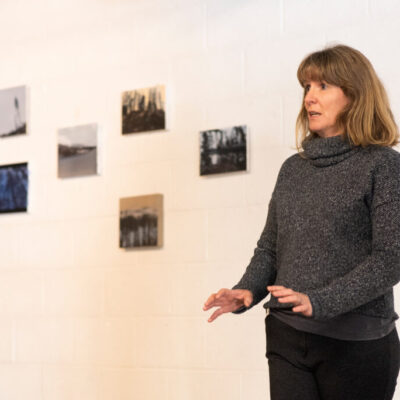
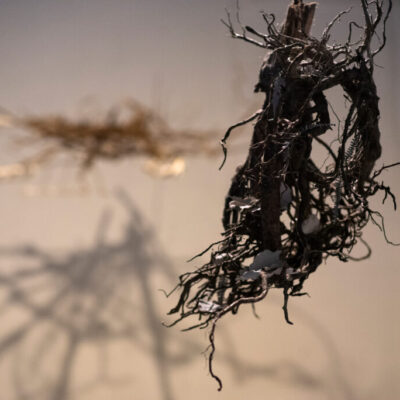
Photos: Aoife Herriott
Woodland Symposium
Brett Sroka | Christine Mackey | Linda Schirmer | Noelle Gallagher | Sarah Roseingrave | Helena Doyle
To date the woodland symposium team have met three times, in November 2021, October 2022 & April 2023, they exhibited at IMMA's Earth Rising festival, September 2023 and exhibited their work in an exhibition - the branch, the fork, the harrow - at the Galway Arts Centre, December 2023 - January 2024. Woodland Symposium 2024 takes place from 19th May - 1st June, with an open day on 1st June.
the branch the fork the harrow - Galway Arts Centre 2023-2024
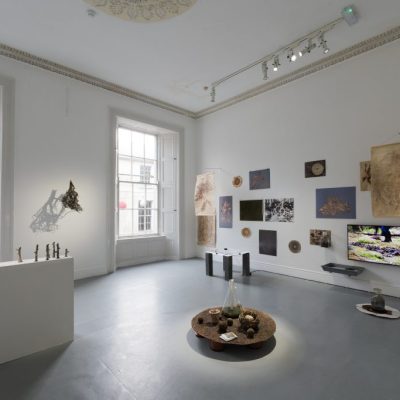
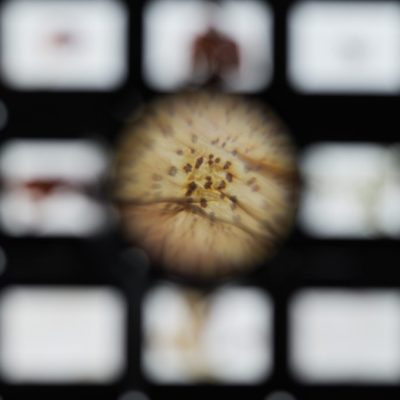
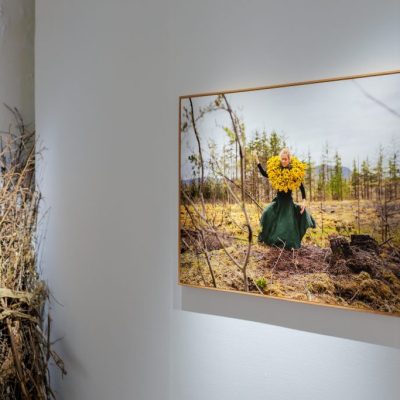
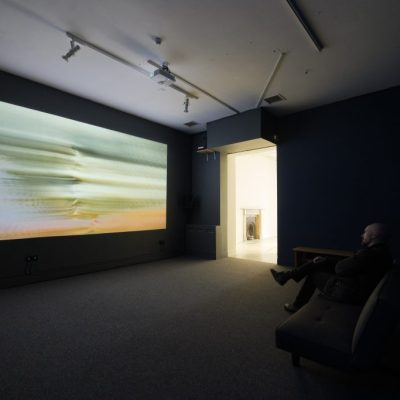
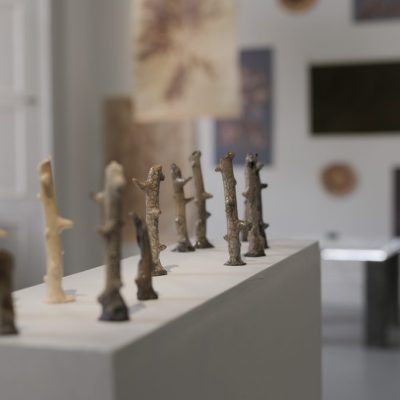
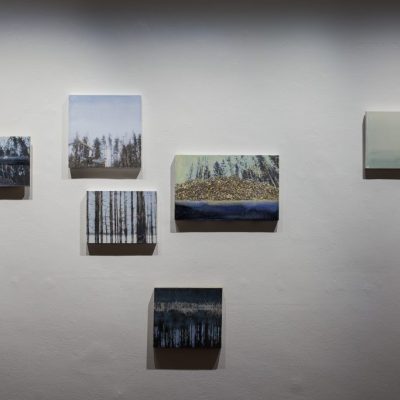
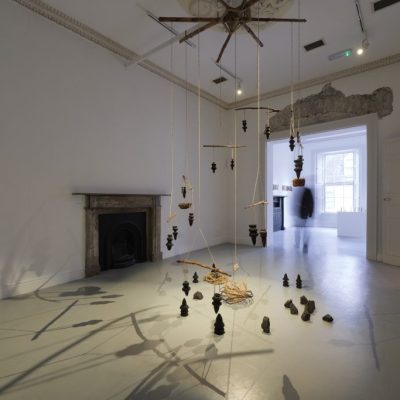
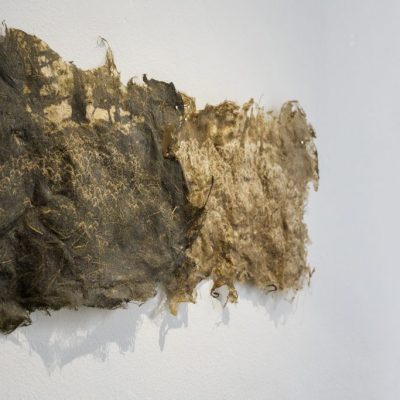
The Woodland Symposium is a collaborative project which facilitates artists in making an artistic response to ecological activism by engaging in a slow-art response to the changing ecology of the site of Interface in Connemara. Over the last three years, artists Brett Sroka, Christine Mackey, Linda Schirmer, Noelle Gallagher, Helena Doyle and Sarah Roseingrave have immersed themselves in the site, an environment which has gradually revealed its complexities over the years.
On each iteration of the Woodland Symposium the artists have been mentored by ecologist Marie Louise Heffernan and archaeologist Michael Gibbons. Through this extended engagement, the artists have built a rich understanding of - and relationship with - the forest and with the wider area. They have visited and revisited the adjacent fragment of ancient oak forest at Derryclare Wood and explored ancient fragments of human habitation in the blanket bogs of Connemara.
Their relationship with this unique place has expanded to involve acts of care and activism, so that the lines have become blurred between the ecological activity of restoration and the artistic response to that activity. It is envisaged that participants will step in and out of the project over many more years, enabling an elasticity in the dynamic and the ranges of responses. This exhibition marks the first off-site public presentation of this body of work which for the most part has been created in- and on-site, with the trees, the soil, the light; the water, the sound, the materials of the forest.
An artist in Connemara creates under the wings of two greats: philosopher and mystic John Moriarty and cartographer Tim Robinson. These two in their own ways respectively walked and mapped the land step by step and stone by stone. Connemara was deeply and closely known by each of these men.
John Moriarty asserts that if we are to build a relationship with the earth, instead of searching for the holy grail, that we should seek the Silver Branch, the Karmic Digging Fork and the Tenebrae Harrow. Silver Branch perception invites us to see the otherworld in our home, the extraordinary in the ordinary, where ‘every bush is a burning bush’, perceiving this world as if for the first time. Moriarty insists on a bearing of our own responsibility in engaging with the earth as essential practice for contributing to ecological reparation.
The Woodland Symposium project facilitates a long-term engagement with a damaged place, in which the participating artists have undertaken to carry the branch, the fork and the harrow. The works of art are not separate from the place, but come from the place and their evolution takes place in tandem with the slowly changing ecology of the forest.
Photos: Tom Flanagan
ANAMx ATU Connemara with Peter Sheehan at Interface - November 2023
Led by Jeremy Madden and Peter Sheehan, the students designed a site specific piece of land art and simple 3-legged stools outdoors at the hatchery facility.
ATU Connemara at Interface - October 2022
Led by Jeremy Madden and Peter Sheehan, the students designed and built simple 3-legged stools outdoors at the hatchery facility.
In association with Conamara Sea Week
Photos: Aoife Herriott
ANAM - in association with GMIT Letterfrack - March 2022
Led by Peter Sheehan, the1st year students of GMIT Letterfrack furniture college were invited to design and construct benches for Interface. They created a beautiful seating area close to the lake edge. Following this they worked with Peter to make skeletal, 'currach-like' structures with hazel rods. These sculptures were installed in the lake edge.
Cothú - in association with GMIT Letterfrack - October 2021
Led by Jeremy Madden, the 4th year students of GMIT Letterfrack furniture college were invited to design and construct shelter for oak saplings. The saplings have grown from acorns planted by the jay, most likely transported from the Derryclare ancient oak forest across the lake from the hatchery. They are vulnerable to grazing by sheep and deer. The purpose of the structures is to protect the saplings from grazing while allowing enough light through in order for them to thrive. The students were encouraged to find and forage for a successful solution to the problem at hand and to use materials that were in the woods.
Photos: Aoife Herriott
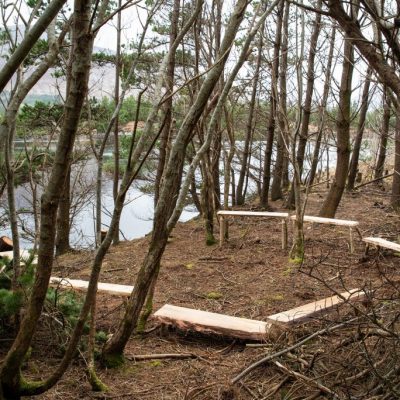
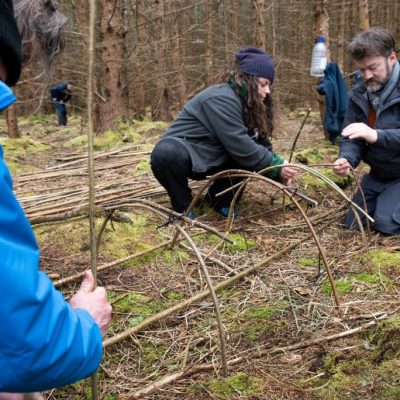
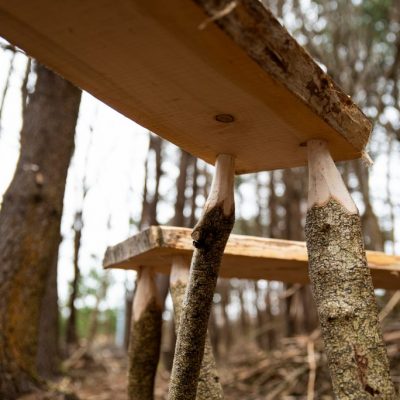
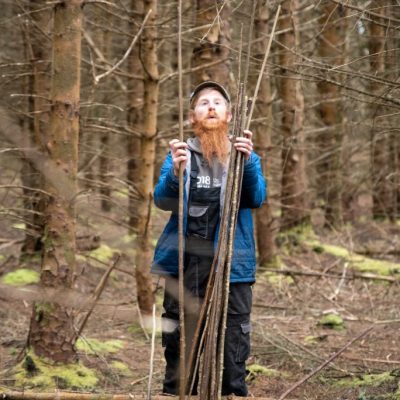
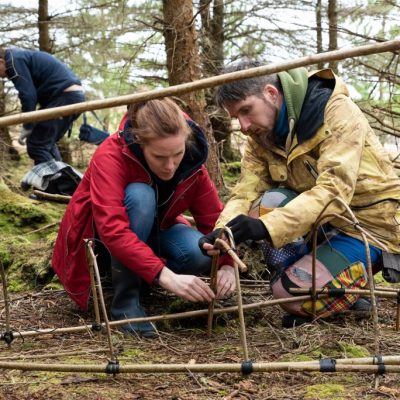
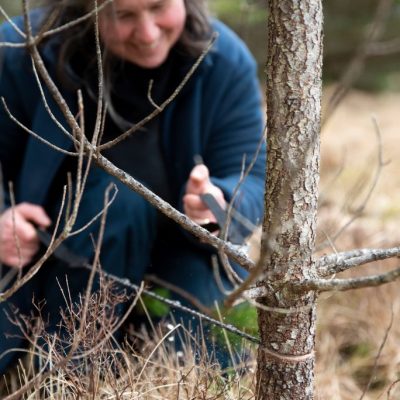
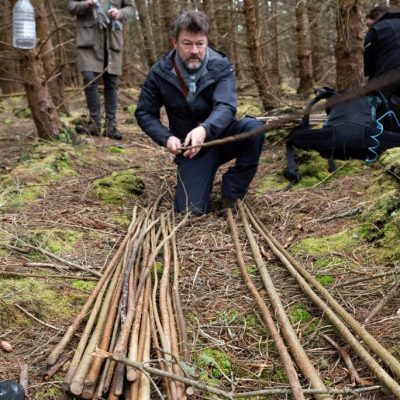
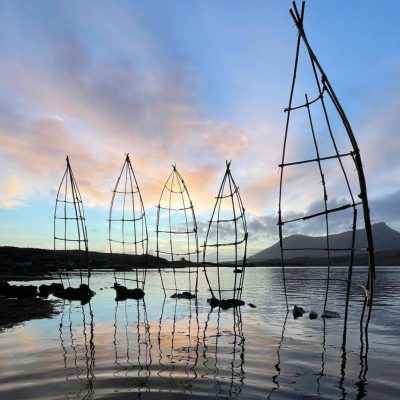
This project is kindly supported by the Springhill Trust, Bord Iascaigh Mhara and the Arts Council of Ireland. In 2003 the Springhill Trust was established as a registered charity. The principal aims of the trust are: To provide effective, constructive and involved support, both financial and otherwise, to children and families in need; to encourage and support projects that enrich the communities to which they belong. To-date significant funds have been provided for projects both in Africa and in Ireland. Please follow the link above if you would like to find out more information, or support the efforts of the trust.
